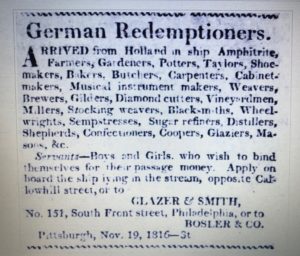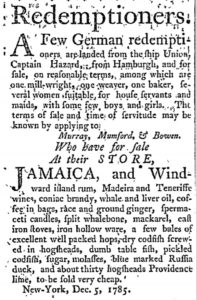 Over five years ago now I wrote the last of a few posts on the question of cream beer. It co-existed with cream ale and Imperial Cream Ales and all the other creamy drinks. I traced it from Ohio in the 1840s back to NYC and Pennsylvania in the 1820s. It has been referenced as a predecessor to Kentucky Common. It was a thing until it wasn’t:
Over five years ago now I wrote the last of a few posts on the question of cream beer. It co-existed with cream ale and Imperial Cream Ales and all the other creamy drinks. I traced it from Ohio in the 1840s back to NYC and Pennsylvania in the 1820s. It has been referenced as a predecessor to Kentucky Common. It was a thing until it wasn’t:
‘The scent of roses clings round it still.’ Cream beer, which was brewed by our best brewers, is, like the ale-sangaree, is a thing of the past. The rich cool beverage has gone out of use…*
Note: cream ale as not “a thing of the past” when that was written. One of the puzzles was whether it was something from Germany. One of the records I came across referenced “…cream beer, or Lauderschaum…” My problem was I thought there were two waves of German immigration to the USA which did not line up with this timing: the Pennsylvania Dutch from before the American Revolution in the mid-1700s and then the Germans of the 1840s escaping the backlash against other revolutions like George Gillig, bringer of lager.
 So much pleased was I to come across that notice up at the top from the Pittsburgh Weekly Gazette of 19 Nov 1816. A notice for the sale of indentured servants, or German Redemptioners. To the right is another notice for Redemptioners from New York City in 1785. No brewers were mentioned in this group unlike the notice from thirty one years later. According to Wikipedia, redemptioners were continental European immigrants in the 18th or early 19th century who sailed most often to Pennsylvania by selling themselves into indentured servitude to pay back the shipping company for the cost of the ticket. Including brewers.
So much pleased was I to come across that notice up at the top from the Pittsburgh Weekly Gazette of 19 Nov 1816. A notice for the sale of indentured servants, or German Redemptioners. To the right is another notice for Redemptioners from New York City in 1785. No brewers were mentioned in this group unlike the notice from thirty one years later. According to Wikipedia, redemptioners were continental European immigrants in the 18th or early 19th century who sailed most often to Pennsylvania by selling themselves into indentured servitude to pay back the shipping company for the cost of the ticket. Including brewers.
Which means there was a third sort of immigration, one with a supply of brewers with contemporary brewing skills within the right time frame who would be able to make “…cream beer, or Lauderschaum…” just like Gillig was able to bring his lager brewing skills a few decades later.
Update: I should also link to this 2018 post about schenk and Bavarian beer.
*What the hell is ale-sangaree?

It does add to the plausibility of a German influence.
Ale sangaree was one of a group of mixed drinks that could be made with beer. Some recipes in Jerry Thomas’ cocktail manual: https://www.google.ca/books/edition/How_to_Mix_Drinks/R1iWsPbCv1EC?hl=en&gbpv=1&dq=ale+sangaree&pg=PP55&printsec=frontcover
Sounds remotely like sangria, but probably nothing beyond a faint phonetic similarity?
Yann
This image is from the 1862 edition. Looks like a very basic thing. But maybe the intention is to deal with a 10% strong ale?